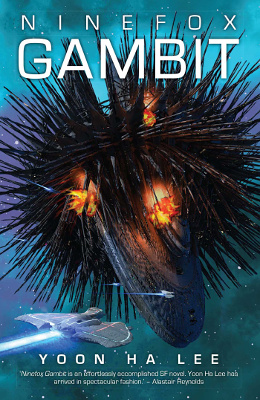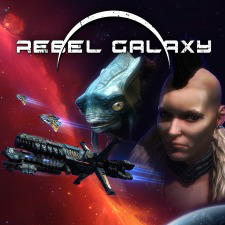 Series: Machineries of Empire, #1
Series: Machineries of Empire, #1
First Published: 14th June, 2016
Genre: Military Science Fiction / Novel
Available: Amazon.com | Amazon UK
Cheris is a soldier who falls out of favour with the hexarchate, but she has a chance to redeem herself by winning back a fortress taken over by heretics. The catch is she has to work with Jedao, a general who slaughtered his own people for no apparent reason.
This is initially a difficult book. There are a lot of concepts introduced with no explanation. It’s worth persevering through the first chapters, as the terminology will fall into place. Until then, it can be a little confusing.
The worldbuilding centres on the idea of using calendars to control people. By making everyone follow the same calendar, with the same festivals and events, it manipulates reality. One result of this is battle formations can change how things work around the soldiers, rather than just providing the more traditional tactical advantages. This reality change also allows faster travel between planets, and helps maintain order across those distances.
Cheris gets in trouble because she calculates new formations based on the calendar of a group of heretics. This wins the battle, but it’s a little too close to heresy. Jedao also isn’t a stranger when it comes to unconventional tactics, given that he’s known for not losing battles, along with the one where he killed everyone on his own side. They make an interesting pair. Their different approaches sometimes clash, but they slowly come to appreciate each other’s strengths.
The siege of the fortress is a relatively slow affair. Cheris is constantly having to decide on acceptable losses, as no plan of action avoids all death. The focus is on tactics and managing resources, including gauging the reactions of the people under her command. As well as showing it from her perspective, there are parts from the viewpoints of other characters, including the troops sent to die. War is shown unflinchingly. There’s nothing glorious about victory. All it means is more bodies.
It’s a very political story. Outside of the task at hand, there’s more going on in the hexarchate as a whole. Issues from the past are impacting the present. The servitors, sentient robots used as servants, also have their own society and agenda. Everything feels very close to unravelling, with the situation at the fortress only being the start.
I have mixed feelings on how insanity is presented. I did like that it’s clearly a social construct. Insanity in the hexarchate means going against the brainwashing and the rigid social control. Jedao is considered mad simply because they don’t know why he acted as he did. However, it didn’t get away from associating violence with insanity.
Jedao is dyscalculic. This is revealed rather late on, so it’s handled very simplistically as dyscalculia meaning being bad at maths. It’s not actually possible to tell that someone is dyscalculic purely by looking at how well they do in exams, which is how it’s presented. It would have been good to mention it earlier, so it could be handled with a little more depth.
I liked the characters and the idea of mathematical manipulation of calendars. It’s a complex political story with some unique worldbuilding. But the ending got too dark for me. There’s a rape scene near the end, which I didn’t know about when I picked up the book. It’s also clear this is a setting where it’s a bad idea to get attached to characters and enjoy seeing their relationships develop, because ultimately, the chances of anyone surviving are slim. Which might be realistic, but I like to have that character connection in a series. Setting and story are not enough for me. For readers who like that darker edge, this may not be a problem.
[A copy of this book was received from the publisher for review purposes]
 Series: Root Code, #3
Series: Root Code, #3 Developer: Double Damage Games
Developer: Double Damage Games
 Collection: Solitary Travelers
Collection: Solitary Travelers